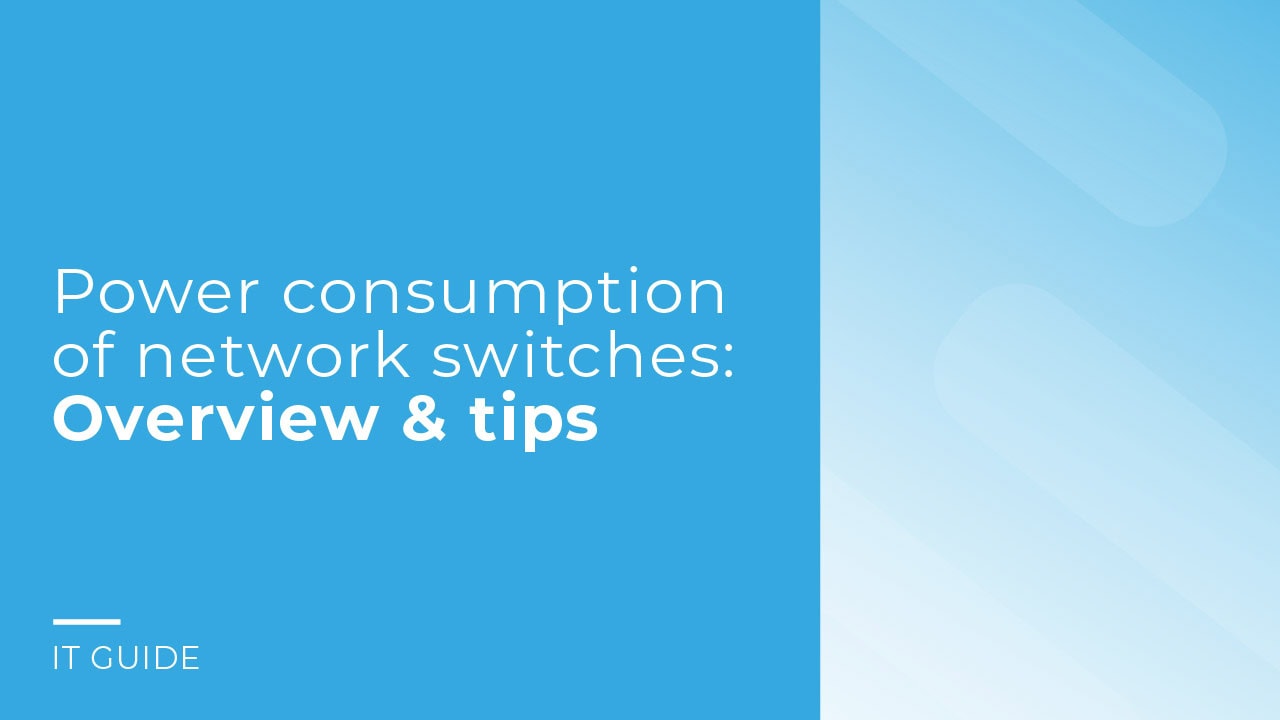
As one of the most important components for functioning networks, switches run continuously. This is reflected in the electricity bill at the latest. It is therefore advisable to take a look at the power consumption of a network switch. This can save a lot of money, especially for companies with large structures. That's why we also help you choose the right switch.
However, choosing energy-efficient hardware not only saves costs - you also make a valuable contribution to sustainability.
If you want to do your electricity costs a favor, you can't avoid doing a little research before buying new hardware. This is because network switches do not have a flat-rate power consumption. Instead, this is influenced by several factors:
Number of ports
A network switch with 24 ports generally consumes more power than one with 5 or 8 ports.
Speed of the data rate
The power consumption of a gigabit switch is higher than that of a 100 Mbit/s switch.
Activity
If data is continuously transmitted at high speed, the power consumption is higher than for an idle device.
Switch type
Switches that offer more functions (often managed switches) consume more power.
PoE standard
Many companies use Power over Ethernet switches, where the power supply and network connection are provided via a single cable. These comply with different standards (IEEE standards = Institute of Electrical and Electronics Engineers), which also define performance and therefore power consumption.
So when making your selection, make sure you choose the switch that meets your requirements.
If you are planning to set up or expand an IT infrastructure, you should have a rough idea of the energy costs in advance. Manufacturers and consumers specify the power consumption of a network switch in watts in the respective description.
With this information, you are well prepared and can easily calculate the costs you will incur:
Power of the device in watts x daily operating time in hours / 1,000 = power consumption per day in kilowatt hours
In the next step, multiply the result by your electricity price from your tariff and you will get the electricity costs of your network switch per day.
If we assume an electricity price of 40 cents and a network switch with 30 watts that runs 24/7, it could look like this:
30 watts x 24 hours / 1,000 = 0.72 kWh/day
0.72 x 40 = 28.8 cents/day
From here, the power consumption of your network switch can simply be extrapolated over the year. Rounded 0.29 cents x 365 days = 105.85 euros/year.
Please note that this is an approximate value, as the factors mentioned above will ultimately influence it.
Information technology is also increasingly focusing on sustainability. The term green IT is used to describe measures that aim to reduce energy consumption, waste of resources and CO2 emissions. Find more on the topic of Green IT in our article: "Green IT: Sustainable Information Technology and Its Significance".
More and more manufacturers are launching energy-efficient network switches with the lowest possible power consumption on the market. The corresponding features can vary.
For example, some models offer automatic shutdown or throttling of unused ports. Intelligent energy management also enables the use of energy-saving Ethernet networks.
Incidentally, using refurbished IT hardware is also very much in the spirit of green IT. You can also find energy-efficient versions among used network switches. In addition, you are conserving resources and can save on the purchase - a benefit for the environment. We at IT-Planet will be happy to advise you on this.
8-port and 24-port switches differ in terms of power consumption, with the number of ports being only one factor. Since a 24-port switch offers more connections, its power consumption is generally higher. However, other aspects also influence energy requirements:
Yes, there are numerous energy-efficient network switches that reduce power consumption through special technologies. These automatically deactivate unused ports or adjust the power supply when utilisation is low. This function is known as Energy Efficient Ethernet (EEE). Intelligent energy management allows energy consumption to be dynamically adjusted to the current network utilisation.
When purchasing energy-saving switches, you should therefore look for labels such as ‘EEE’ or ‘Green Ethernet’. The use of refurbished switches is also advantageous: after refurbishment, they offer the same quality as new devices. Well-known manufacturers that offer energy-efficient models include TP-Link, D-Link, Netgear and Arista.
Network switches can consume different amounts of power depending on the type. Small home switches with 5 or 8 ports usually only require 4 to 10 watts, while large enterprise switches with many PoE ports can consume between 30 and over 250 watts. The actual energy consumption depends on various factors:
The exact power consumption can be found either on the device label or in the manufacturer's data sheet. Alternatively, you can use a power meter between the switch and the power outlet to determine the exact power consumption.